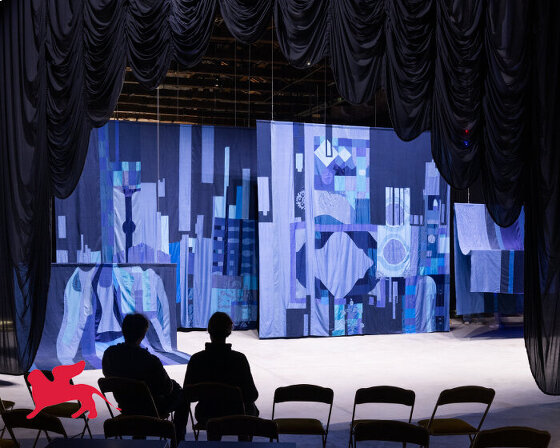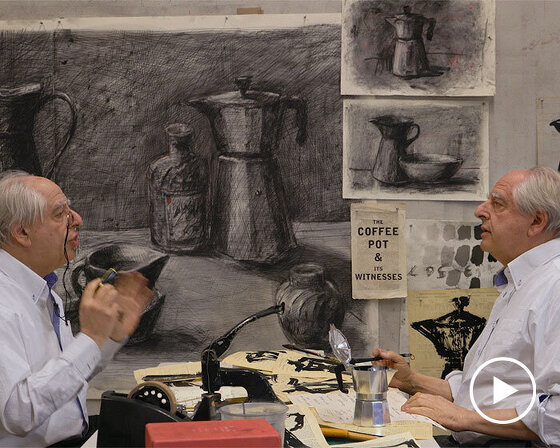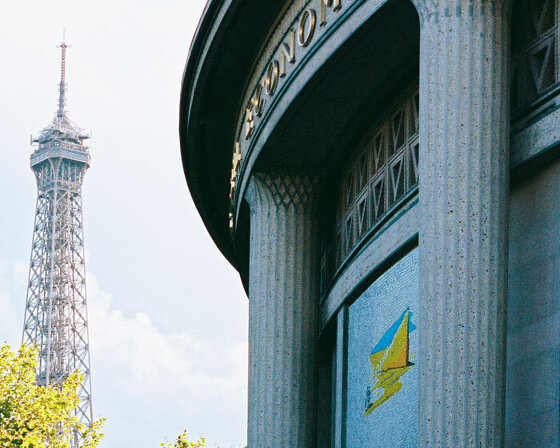KEEP UP WITH OUR DAILY AND WEEKLY NEWSLETTERS
happening this week! pedrali returns to orgatec 2024 in cologne, presenting versatile and flexible furnishing solutions designed for modern workplaces.
PRODUCT LIBRARY
these twisted sculptures now join the artist’s earlier tangled post box installed on cheese lane, which marks its re-opening as a public right of way after a 50-year closure.
aziza kadyri reflects on modernizing suzani embroidery with AI, amplifying women's voices, and the deconstructed theater backstage.
the south african artist talks to designboom about the nine-episode film series, available on MUBI from october 18, 2024.
connections: +160
dive into our guide for the must-see highlights of art basel paris and design miami.paris 2024, as well as all other exciting shows in paris.
connections: 14
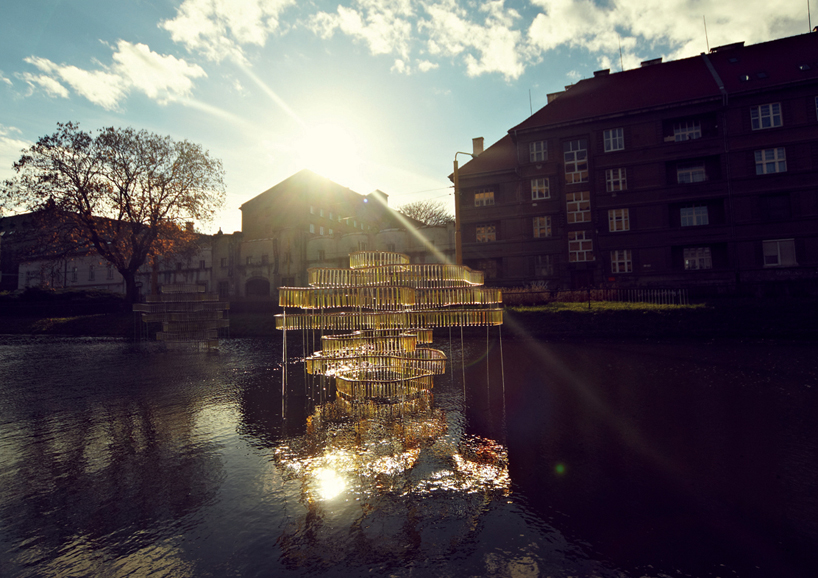
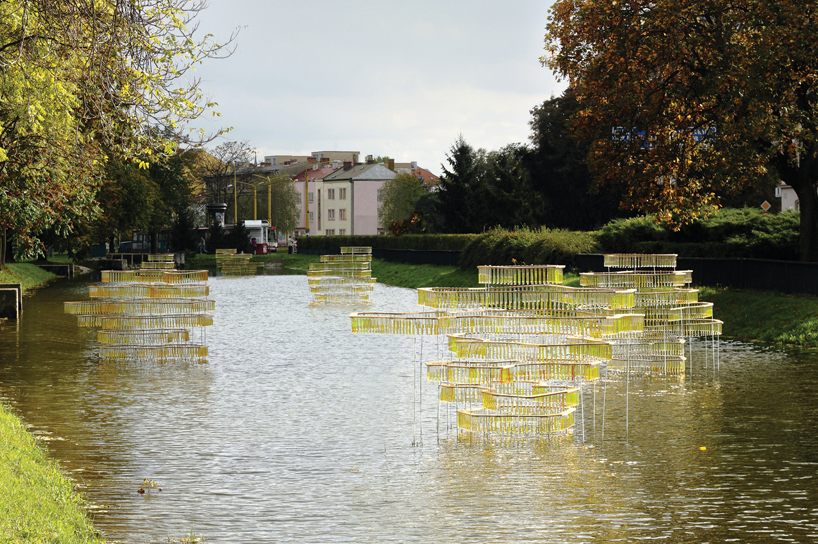 its green fluorescent colour will gradually disappear as a result of natural interventions, light and rain.
its green fluorescent colour will gradually disappear as a result of natural interventions, light and rain.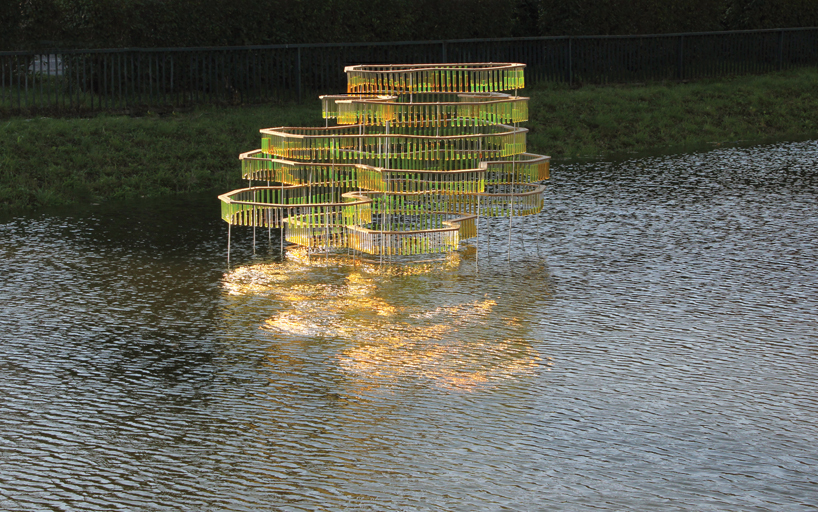 the tops of the test tubes are left open to allow the water and wind to pick up the chemical.
the tops of the test tubes are left open to allow the water and wind to pick up the chemical.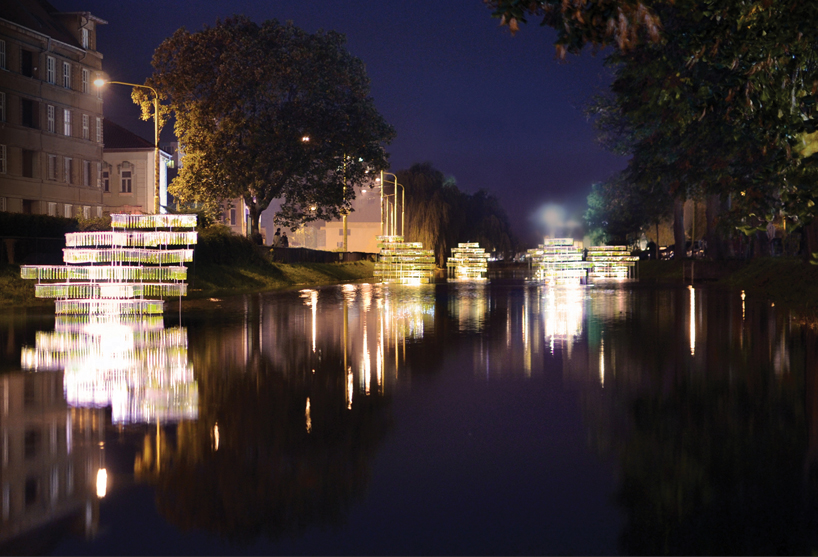 water carrier on the mlynsky nahon river in kosice, slovakia
water carrier on the mlynsky nahon river in kosice, slovakia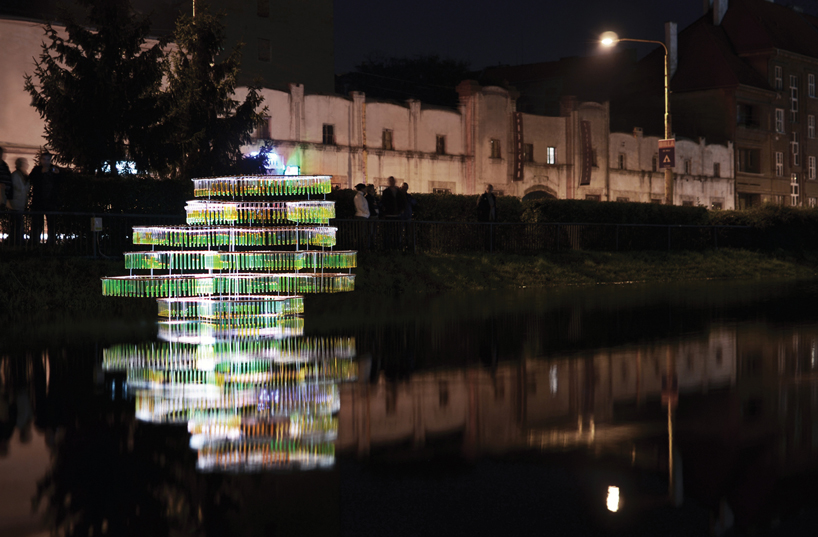 fluorescein is a chemical used to draw underground water courses, resurgences, leaks, test the wastewater networks, find the path of unfamiliar networks, identify inversions between networks of wastewater and rains.
fluorescein is a chemical used to draw underground water courses, resurgences, leaks, test the wastewater networks, find the path of unfamiliar networks, identify inversions between networks of wastewater and rains.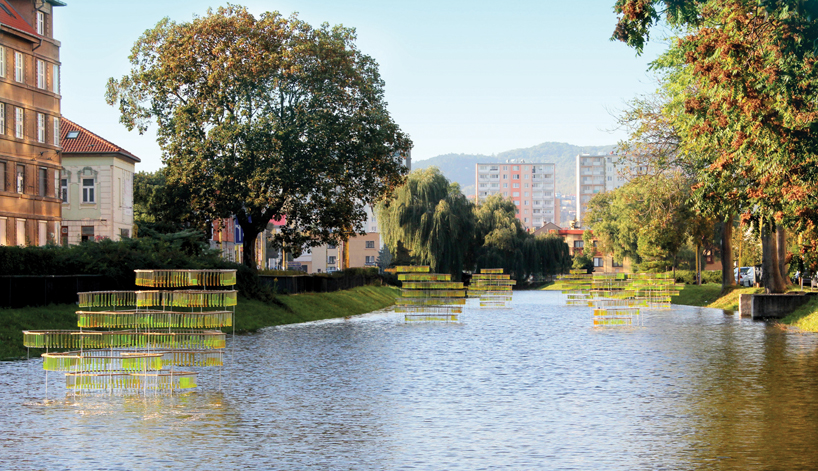 stagnant, here it is used cast against type favoring a pragmatic relationship, largely utilitarian and physical, domestic water, controlled and dominated.
stagnant, here it is used cast against type favoring a pragmatic relationship, largely utilitarian and physical, domestic water, controlled and dominated.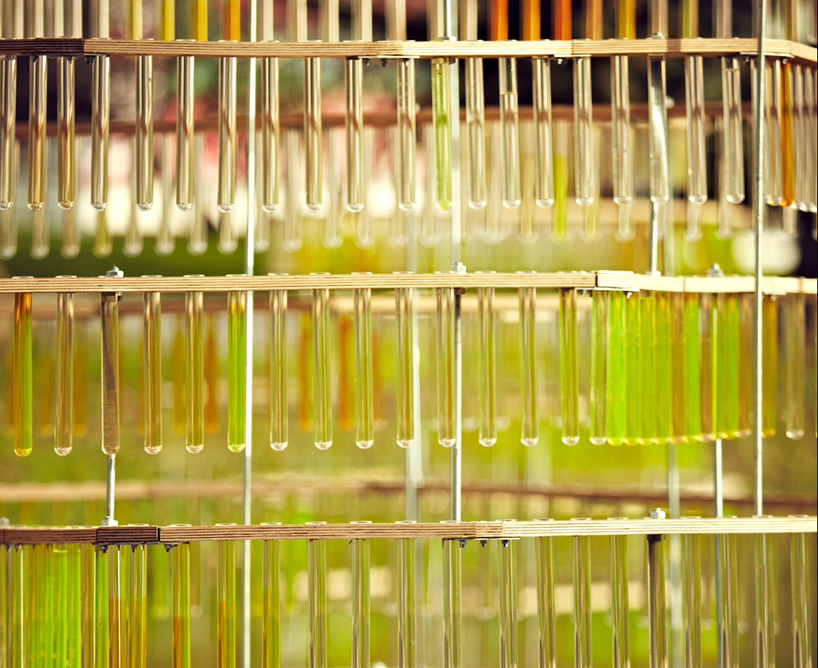 the wooden structure loaded with test tubes filled with fluor, a fluorescein, a tracing chemical used in waterways.
the wooden structure loaded with test tubes filled with fluor, a fluorescein, a tracing chemical used in waterways.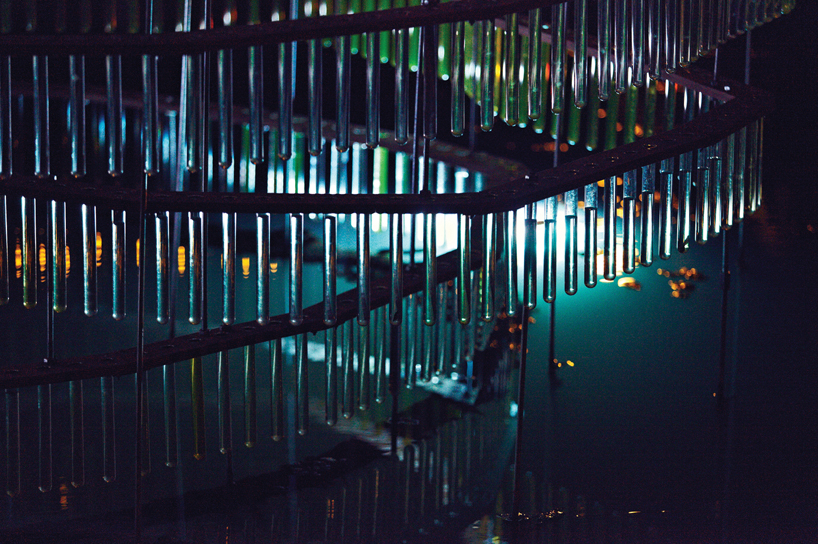 its green fluorescent colour will gradually disappear as a result of natural interventions, light and rain.
its green fluorescent colour will gradually disappear as a result of natural interventions, light and rain.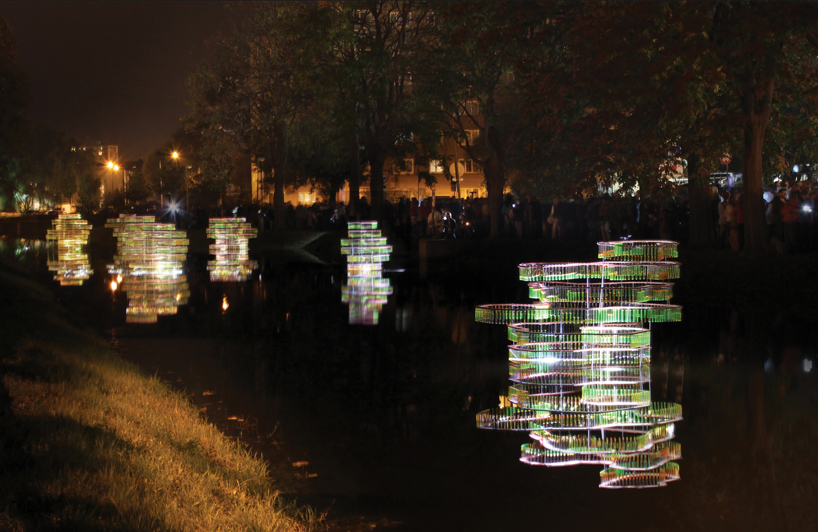 the seven structures required 5000 test tubes.
the seven structures required 5000 test tubes.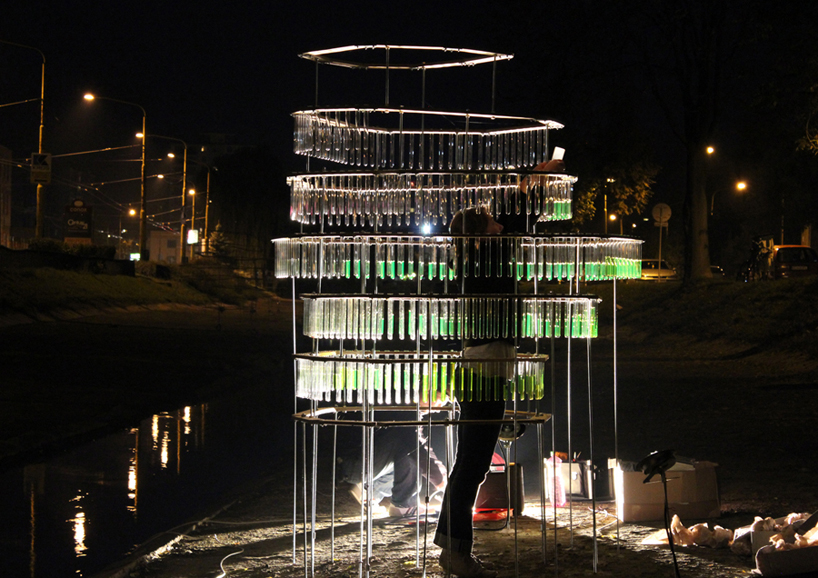 setting up one of the seven structures before the white night arts festival.
setting up one of the seven structures before the white night arts festival.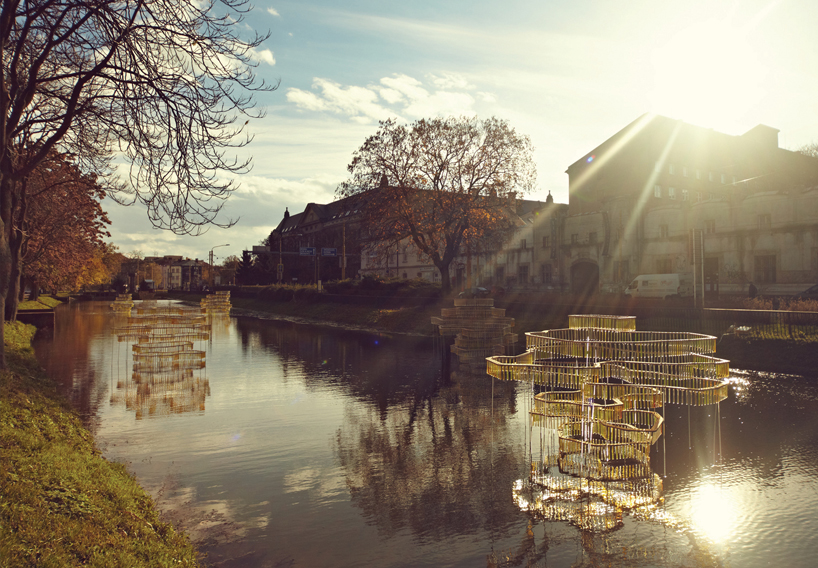 the movement of the fluorescent green traces the river’s currents and the far reaching impact of pollution.
the movement of the fluorescent green traces the river’s currents and the far reaching impact of pollution.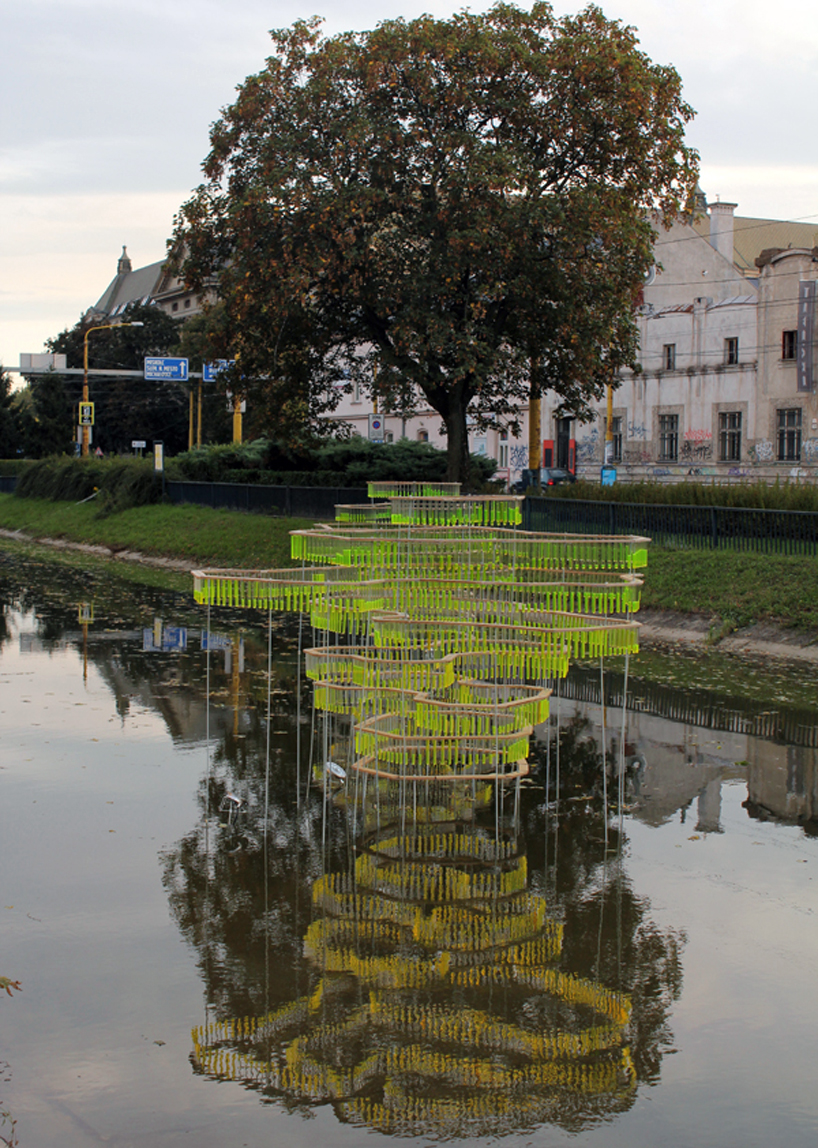 the structures were constructed in the artificial river which was then flooded.
the structures were constructed in the artificial river which was then flooded.


